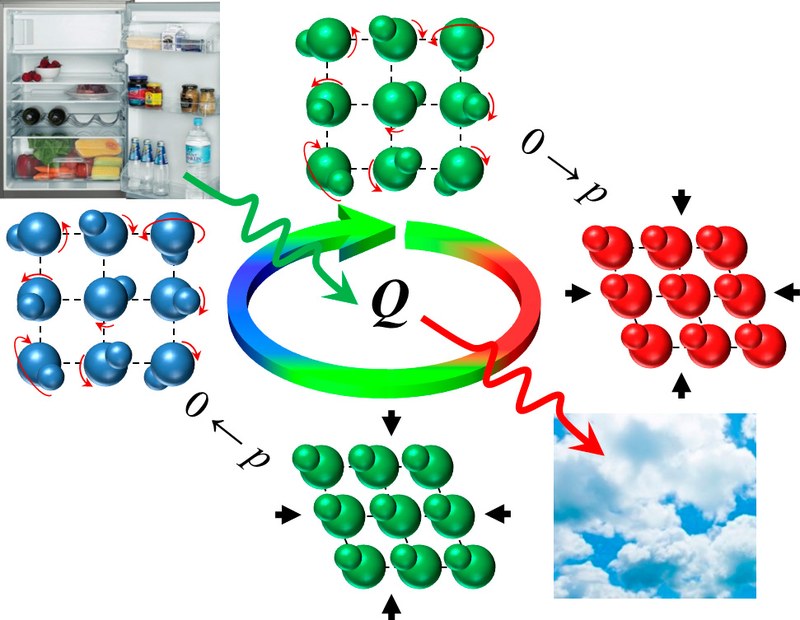Identified a plastic crystal useful as an ecological cooler in refrigerators and air conditioners
May 09, 2019
Researchers from the physics department together with the University of Cambridge and the University of Barcelona have identified a solid material, respectful with the environment, which could replace the hydrofluorocarbon gases (HFC) and hydrocarbons (HC) -highly contaminants and flammable- that are used currently in most refrigerators, air conditioners and cooling systems
The plastic crystal neopentilglicol, when pressure is applied, has a great cooling effect, enough to be competitive when compared with gases that are used in the vast majority of refrigerators and air conditioners - hydrofluorocarbons (HFC) and hydrocarbons (HC ) - which are highly toxic and flammable and which, when they reach the atmosphere, contribute to global warming. In addition, this new material is cheap, easy to obtain and works practically at room temperature.
The study, prepared by a team of researchers from the Materials Characterization Group of the UPC, the University of Cambridge and the University of Barcelona, describes the enormous thermal changes that can be achieved by applying pressure to plastic crystals. Given that traditional cooling technologies are based on the thermal changes that take place when a compressed fluid - usually an HFC or a HC- expands: when the fluid expands, its temperature drops and, therefore, cools its surroundings. In the case of solids, however, cooling is achieved by introducing changes in the microscopic structure of the materials, which is achieved by applying a magnetic or electric field, or from a mechanical force. For decades, the capacity of the solids was less than that of the fluids, but the discovery of the large barocaloric potential of neopentyl glycol (NPG, for its acronym in English) and other organic compounds - easier to compress - has changed the game.
As Josep Lluís Tamarit explains, "the potential of plastic crystals in this field is very large and is not limited to NPG, now we are investigating similar ones with very promising results." In fact, the members of the different universities participating in the study have developed a joint patent that aims to bring to the market the use of these materials in these new cooling systems with the necessary involvement of companies. The discovery of the barocaloric effects of plastic crystals places barocaloric materials at the forefront of research to achieve safe, efficient and environmentally friendly cooling.
Colossal barocaloric effects near room temperature in plastic crystals of neopentylglycol
P. Lloveras, A. Aznar, M. Barrio, Ph. Negrier,C. Popescu, A. Planes, L. Mañosa, E. Stern-Taulats, A. Avramenko, N. D. Mathur, X. Moya, J.-LL Tamarit
Nature Communications 10: 1803
DOI: s41467-019-09730-9

Share: